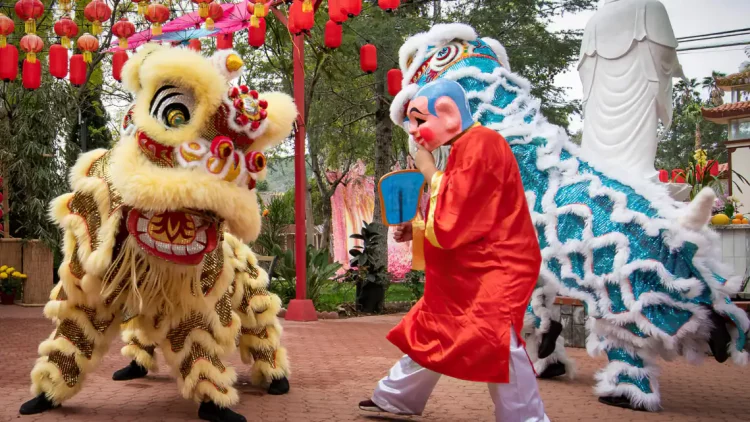New Year’s celebrations are deeply rooted in cultural traditions and rituals that vary across the globe. Whether marked by festivals, feasts, spiritual practices, or family gatherings, the start of the new year is an opportunity for people to reflect on the past, set intentions for the future, and honor their customs. Local rituals during New Year celebrations offer a unique insight into a culture’s values, beliefs, and community practices. In this article, we will explore the significance of these rituals, highlighting how different cultures celebrate the arrival of the new year and what these customs represent for the people who observe them.
New Year Rituals Around the World: A Global Perspective
New Year rituals are diverse and rich in meaning, reflecting the unique history and values of each culture. While the occasion itself marks a fresh start for all, how it is celebrated varies widely across different regions. From fireworks to feasts, sacred rituals, and family gatherings, these customs bring people together and create lasting memories.
The Significance of New Year’s in Different Cultures
In many cultures, New Year’s Day is not just a calendar event but a celebration of renewal and hope. It is often a time for deep introspection, spiritual practices, and community connection. Some cultures mark the new year according to the solar or lunar calendars, which can differ from the Gregorian calendar. The variety of celebrations can be seen through the lens of cultural customs, which often blend elements of history, religion, and folklore.
For example, Chinese New Year (also known as the Spring Festival) is celebrated according to the lunar calendar, typically falling between January 21 and February 20. This occasion is marked by grand parades, the famous dragon dance, and the lighting of fireworks to ward off evil spirits. The focus is on family reunions, with traditional foods such as dumplings and fish symbolizing prosperity and good fortune.
In Scotland, Hogmanay is the term for the Scottish New Year celebration. It is known for its vibrant torchlight processions, street parties, and singing of Auld Lang Syne. In this region, the tradition of first-footing, where the first person to enter a household after midnight brings gifts for good luck, holds significant importance. The exchange of whisky and shortbread also plays a key role in the celebration.
In Japan, New Year’s Day (or Shogatsu) is the most important holiday of the year, steeped in rituals that are observed with great reverence. Osechi-ryori, a special set of foods prepared for the occasion, is prepared in anticipation of the new year. The foods symbolize different aspects of prosperity, health, and longevity. The ritual of Hatsumode, the first shrine visit of the year, is a sacred moment in which families come together to pray for health, happiness, and success in the coming year.
The Spiritual Aspect of New Year Rituals
Many New Year rituals have a spiritual component that ties into the idea of starting fresh or cleansing oneself from the past year. In Mexico, the Dia de los Muertos (Day of the Dead), celebrated around the same time as the Gregorian New Year, honors deceased ancestors. The ofrendas (altars) with offerings like sugar skulls, marigold flowers, and the deceased’s favorite foods serve as a way of remembering and honoring the past.
In India, the Diwali festival, which often coincides with the end of the year in the Hindu lunar calendar, celebrates the victory of light over darkness and good over evil. The festival is observed with prayers to Lakshmi, the goddess of wealth and prosperity. Homes are decorated with oil lamps and rangoli (decorative patterns created with colored powders or flower petals). The deep spiritual significance of Diwali is tied to new beginnings, renewal, and the triumph of hope.
Meanwhile, in the Philippines, New Year’s Eve is marked by the ritual of media noche, a midnight feast to symbolize abundance for the coming year. Filipino families also engage in various superstitions, such as making noise with firecrackers and eating round fruits, which are believed to bring good fortune. This spiritual connection to the rituals emphasizes family unity and hope for prosperity.

Unique Regional Traditions That Define New Year Celebrations
Beyond spiritual significance, local customs and practices help define the experience of welcoming the new year. These rituals, passed down from generation to generation, are a testament to the resilience of cultural heritage. From the cultural dances in Brazil during Carnival to the Gong Xi Fa Cai greetings in China, every culture celebrates in its own distinctive way.
Spain: The Twelve Grapes of Luck
In Spain, a well-known New Year’s tradition involves eating twelve grapes at midnight, one for each stroke of the clock. This ritual is believed to bring good luck and ensure that each month of the new year will be filled with prosperity. It is a popular custom that is practiced not only in Spain but also in Latin American countries such as Mexico and Argentina.
Denmark: Smashing Plates for Good Fortune
In Denmark, a unique tradition involves smashing old plates and dishes on the doorsteps of friends and family on New Year’s Eve. The belief is that this act will bring good luck and happiness for the year ahead. The more broken plates you find on your doorstep, the more luck you are said to have in the coming year. It’s a fun and noisy way to ring in the New Year, with communities coming together to partake in the celebration.
Greece: Cutting the Vasilopita Cake
In Greece, New Year’s Day is associated with the feast of Saint Basil. The celebration includes the cutting of the Vasilopita cake, which contains a hidden coin. The person who finds the coin in their slice is said to be blessed with good luck for the year. The cake is often shared with family, friends, and neighbors, making it a time for togetherness and celebration.
Russia: Ded Moroz and Snegurochka
In Russia, New Year’s celebrations are closely linked with Ded Moroz (Grandfather Frost) and his granddaughter Snegurochka. Together, they are akin to Santa Claus and help deliver gifts to children during the festive period. The tradition is particularly vibrant in St. Petersburg and Moscow, where large public gatherings, fireworks displays, and concerts mark the end of the year.
Food and Drink: A Key Element in New Year Celebrations
Food plays an integral role in New Year rituals across cultures. Special dishes are prepared and served with the belief that they will bring luck, health, and prosperity.
In Italy, New Year’s Day is marked by eating lenticchie (lentils), which symbolize wealth due to their coin-like shape. Similarly, in Japan, the consumption of foods such as ozoni (a type of soup with rice cakes) and kagami mochi (a decorative rice cake) marks the occasion. These dishes are steeped in symbolism, with each ingredient representing various hopes for the year ahead.
In Scotland, a hearty meal of haggis, neeps (turnips), and tatties (potatoes) is often served during Hogmanay, followed by traditional whisky toasts. Sharing food is a central part of the celebration, reflecting themes of hospitality, gratitude, and the joy of togetherness.
The Evolution of New Year’s Rituals
While many of the customs surrounding New Year celebrations remain unchanged, the way in which people observe them has evolved. For instance, digital media has changed the way we share celebrations, with many people around the world participating in online celebrations or virtual events. Despite the changes, the underlying themes of renewal, hope, and community remain unchanged.
As more people travel and move across borders, the blending of New Year rituals from different cultures becomes increasingly common. Some cultures have adopted New Year traditions from others, while others maintain their unique customs. Whether it’s the shared custom of watching fireworks at midnight or participating in spiritual rituals, New Year’s celebrations have become more interconnected, but each culture still brings its unique flavor to the table.
Conclusion: The Timeless Significance of New Year Rituals
The rituals associated with celebrating the new year provide a window into the cultural values, beliefs, and history of the communities that observe them. Whether it’s the grape-eating ritual in Spain, the haggis feast in Scotland, or the prayer offerings in Japan, each tradition carries deep meaning and significance. These customs not only reflect the optimism and hope for the future but also serve to preserve and pass down cultural heritage.
As people continue to mark the passing of time and the arrival of new beginnings, the rituals surrounding New Year’s celebrations will remain a vital and meaningful part of the global cultural fabric. No matter where you are in the world, New Year rituals offer a sense of unity and continuity, reinforcing the shared human experience of welcoming a fresh start and embracing the potential of the year to come.





















